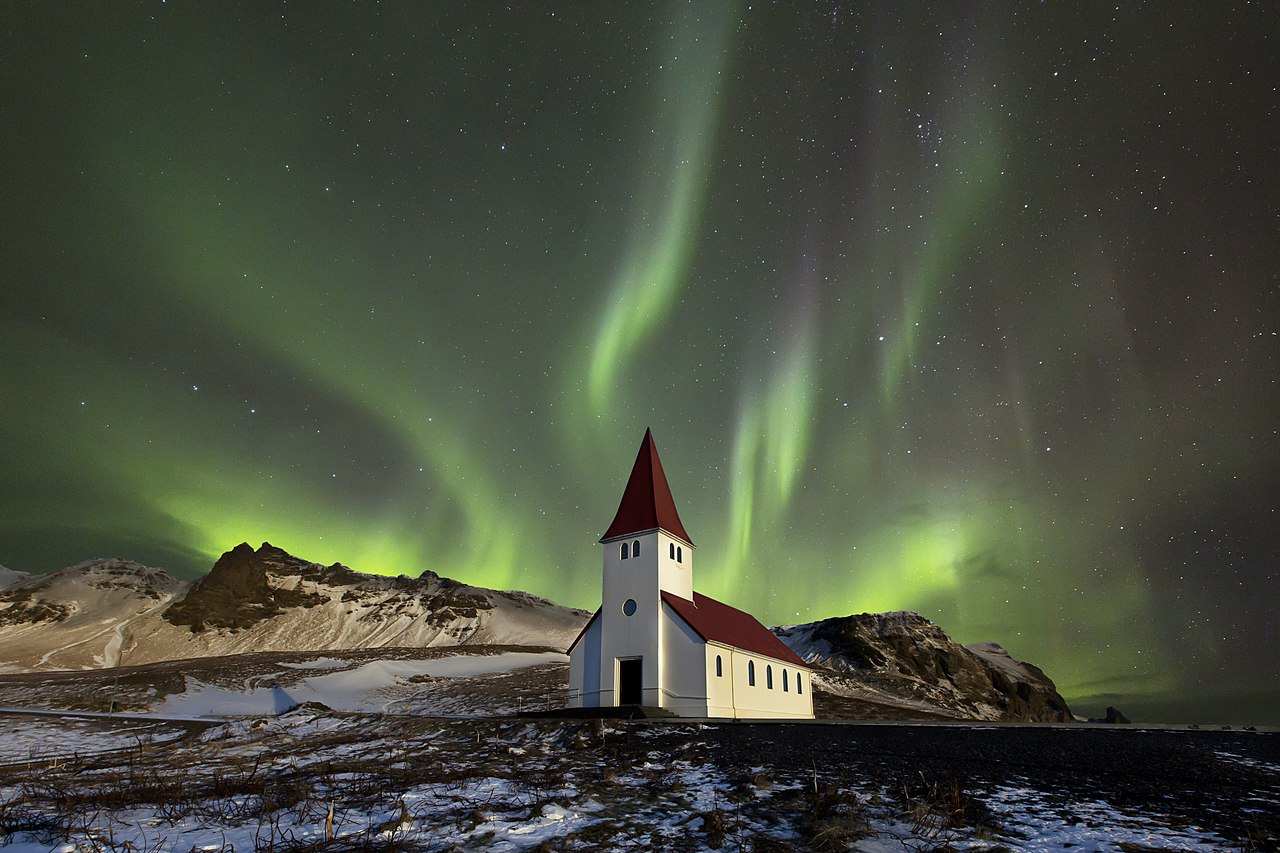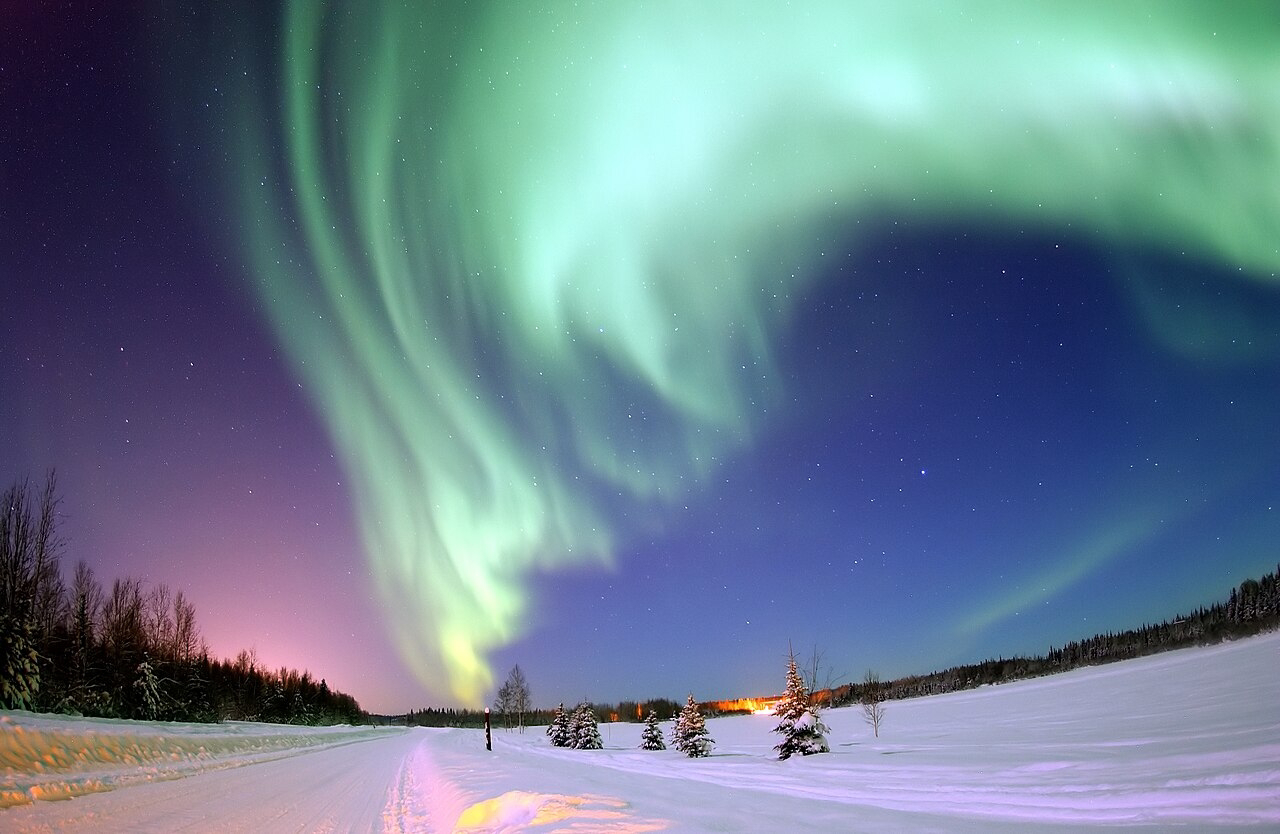Aurora Borealis; THE NORTHERN LIGHTS
Fall in love with the lights; THE NORTHERN LIGHTS
All you need to know before you visit norway
To observers at far-northern latitudes, the Lights are a frequent occurrence, but many who live in more temperate climates have never seen them, even though they are occasionally seen as far south as 35 degrees North latitude. This article will help you improve your chances of seeing the Lights if you journey north.
The aurorae are caused by charged particles ejected from the sun. When these particles reach the earth, they collide with gas atoms and molecules in the earth's upper atmosphere, energising them and creating a spectacular multi-coloured light show. Charged particles are affected by magnetic fields, so the Lights occur mainly at far northern or southern latitudes near the Earth's magnetic poles.
The Lights look somewhat similar to a sunset in the sky at night, but appear occasionally in arcs or spirals usually following the earth's magnetic field. They fairly often look like moving curtains of light, high in the sky. They are most often light green in color but often have a hint of pink. Strong eruptions also have violet and white colors. Red northern lights are rare, but are sometimes observed.
The Lights are generally fairly dim, but sometimes bright enough that reading a newspaper on a moonless night is possible. Both brightness and how far from the poles they are visible vary according to three factors: time of year, an 11-year cycle in solar activity, and solar storms. These are discussed in more detail later.
Light pollution around cities can mask a dim aurora display. Therefore, areas at least 30 km from cities are preferred for viewing. The trick is to get far enough from cities for good viewing (generally easy, since most northern areas are not heavily populated) without taking undue risks in a climate that can easily kill you.
Planning
There is no guarantee of seeing the Northern Lights even if you are in the best areas at the best time, and there is some chance in others areas and seasons. However, a bit of planning will radically increase your chances. In short, pick somewhere on or very near the oval and go in winter.
Time of year
Lights in Scandinavia
Darkness is required. Most Northern Lights locations are at high latitudes, in areas that get the "midnight sun"; there is no darkness from late April until mid-August, or even longer in far northern locations like Svalbard. Places within eight degrees of latitude south of the Arctic Circle, such as Yellowknife in Canada, experience "white nights", with only a few hours of twilight between dusk and dawn, at this time of year. In this period, no Northern Lights can be observed.
In the most intense Northern Lights areas, right on the oval, the lights are sometimes observed in any season but chances are best when it is dark after 6pm, from late September to late March.
On a yearly basis, the Lights are at their peak around the time of the equinoxes, in September and March. The reasons for this trend aren't fully known, but it's definitely real, not just an artifact of the weather or other viewing conditions. Also, if you are planning to do other activities during the day, this is a good time to visit because you can enjoy twelve hours of daylight and still have a good chance of seeing the aurora at night. Temperatures are also milder than in mid-winter.
Time of day
The time between 6PM and 1AM is the most intense period of the day. The highest probability within this timespan is between 10 and 11PM. However, this is a guideline, and during the Polar night aurorae can be observed as early as 4PM, and all through the night. The most intense displays last some 5–15 minutes each. In periods of strong activity, one can generally expect flares starting in the early evening, peaking around 10pm, and going on into the early morning hours.
Even with good clothing, few travellers can tolerate a long time outdoors in an arctic night and the nights generally get continuously colder from sunset until the morning sun starts to warm things up. Even if there are lights in the early evening, it may be best to set out at 9pm or so (sun time, check your timezone); this gives you a good chance of catching the peak display without being out too long or at the coldest times.
11-year cycle
In the longer term, auroral displays are correlated with an 11-year cycle in sunspot activity and other perturbations of the sun; the more restless the sun, the more aurorae. However, at the most favorable latitudes, the Lights are still likely to be seen even at solar minimum; it's mainly at lower latitudes that they get scarce during the inactive times. The last maximum in solar activity was in late 2013.
Solar storms
In addition to these more or less regular variations in frequency of the aurora, there are also less predictable, erratic displays resulting from solar storms. Some of these, particularly near solar-activity maximum, can lead to visible Northern Lights remarkably far south, if you're in an area with clear, transparent night skies. The largest recorded solar storm took place in 1859; the Lights were bright enough to read a newspaper in Boston (42°N) and visible as far south as Mexico.
The Alerts section below will help you stay on top of solar activity and prepare for some viewing whena solar storm does occur.
Clear skies
Last but not least, don't forget the weather forecast — aurora occur very high up in the atmosphere, and if there are clouds in the way you will not see anything. In Northern Scandinavia, the weather is notably better towards the end of the Northern Lights season (February-March), than in the beginning. The weather is probably the most important success factor in the areas under the Northern Lights oval, where there are visible Northern Lights on up to 80% of all clear nightstes.













Khub sundor😍
ReplyDelete💯❤️
ReplyDeleteGood
ReplyDelete